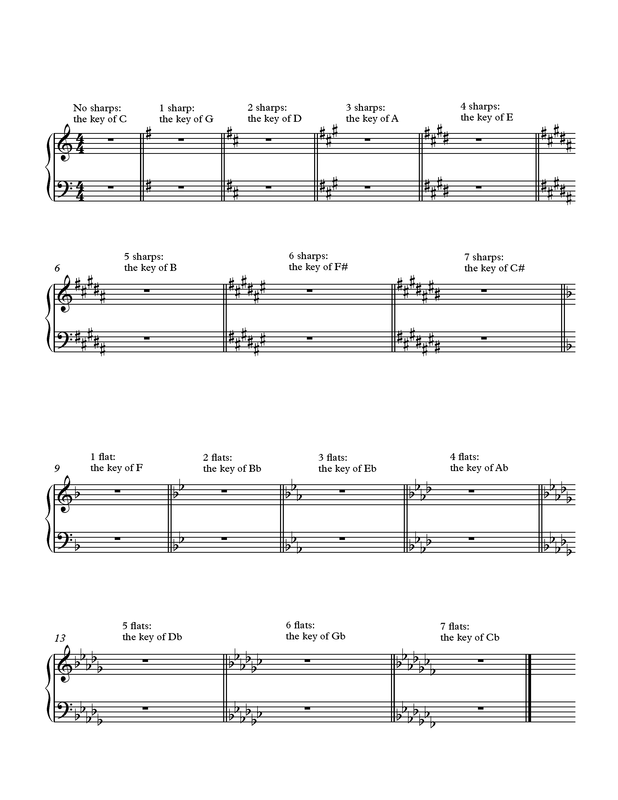Sharps and flats: What key am I in?
Keys are nothing more than major scales. Why do they exist? That's made obvious when a female wants to sing a song
recorded by a man and finds that the notes are too low. The solution? Make the song higher.
So, alphabetically, if a man sings in the key of A (meaning, "using the notes of an A Major Scale"), she might be able to
shift all the notes up to, perhaps, C Major, to see if that range suits her own voice. Instead of attempting to sing
A B C# D E F# G# A below the center of the piano where it's too low, she can try to move to the right (higher) and try
C D E F G A B C to see if that fits her range.
Below is the standard order of the arrangement of sharps and flats.
For sharps, it's F# C# G# D# A# E# B#
For flats it's Bb Eb Ab Db Gb Cb Fb
The tricks for knowing your keys are these:
For sharps, the key name is 1/2 step higher than the last sharp.
For flats, the key name is equal to the second-to-last flat.
recorded by a man and finds that the notes are too low. The solution? Make the song higher.
So, alphabetically, if a man sings in the key of A (meaning, "using the notes of an A Major Scale"), she might be able to
shift all the notes up to, perhaps, C Major, to see if that range suits her own voice. Instead of attempting to sing
A B C# D E F# G# A below the center of the piano where it's too low, she can try to move to the right (higher) and try
C D E F G A B C to see if that fits her range.
Below is the standard order of the arrangement of sharps and flats.
For sharps, it's F# C# G# D# A# E# B#
For flats it's Bb Eb Ab Db Gb Cb Fb
The tricks for knowing your keys are these:
For sharps, the key name is 1/2 step higher than the last sharp.
For flats, the key name is equal to the second-to-last flat.
